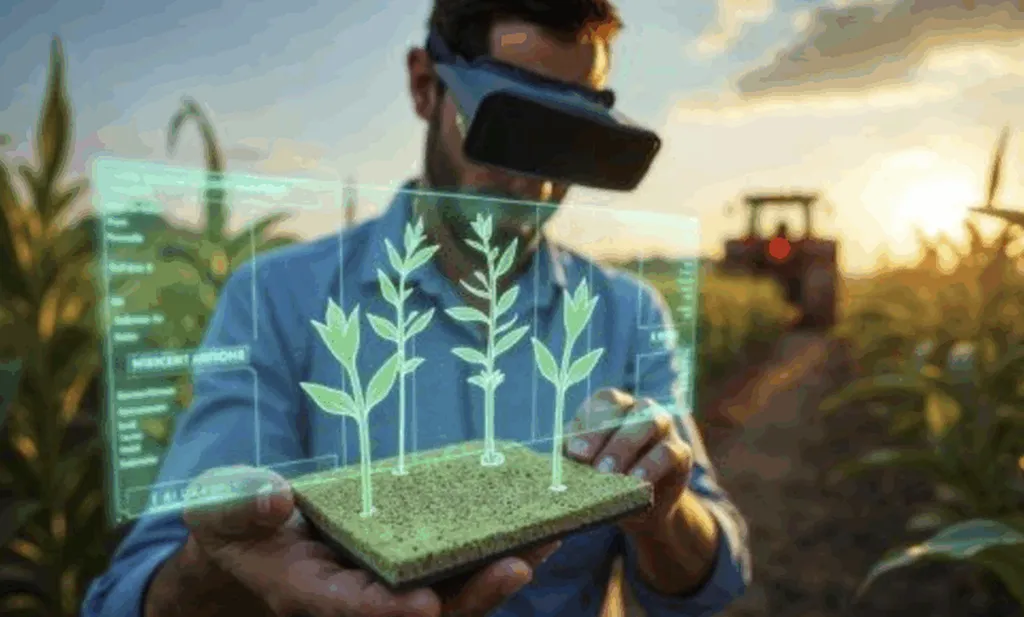In the ever-evolving landscape of agricultural technology, a groundbreaking study has emerged that could significantly impact how we monitor and manage cropland use. Published in the *IEEE Journal of Selected Topics in Applied Earth Observations and Remote Sensing*, the research introduces FS2CNet, a dynamic frequency selection and similarity constraints change detection network designed to enhance the accuracy of detecting cropland nonagriculturalization. This innovation holds substantial promise for the agriculture sector, offering a more precise and efficient way to track changes in land use, which is crucial for sustainable farming practices and resource management.
Cropland nonagriculturalization—the conversion of agricultural land to non-farm uses—is a critical issue that affects global food security and environmental sustainability. Traditional methods of detecting these changes often fall short due to challenges such as fragmented change regions, high-frequency noise from seasonal crop variations, and low-frequency structural ambiguities like gradual topographical changes. These limitations can lead to inaccurate data, hindering effective decision-making.
Enter FS2CNet, a novel approach that addresses these challenges head-on. Unlike conventional methods that rely on fixed filters or uniform frequency processing, FS2CNet employs a dynamic frequency selection mechanism. This adaptive recalibration allows the model to decompose features into high-frequency and low-frequency components, dynamically adjusting the contributions of different frequency bands. “By suppressing high-frequency noise, such as crop texture disturbances, and enhancing structurally salient low-frequency information, like buildings and roads, FS2CNet provides a more accurate and reliable detection of changes,” explains lead author Dongbo Zhou from the Faculty of Artificial Intelligence in Education at Central China Normal University in Wuhan, China.
The implications for the agriculture sector are profound. Accurate change detection is essential for farmers, policymakers, and environmentalists to make informed decisions about land use, resource allocation, and sustainable practices. FS2CNet’s ability to enhance detection consistency of fragmented regions can lead to better monitoring of cropland conversion, ultimately supporting efforts to preserve agricultural land and promote sustainable development.
Moreover, the research introduces a similarity constraints optimization process that enhances feature reconstruction across hierarchical levels. This ensures that the detected changes are consistent and reliable, even in complex scenarios. “Our experiments on three nonagriculturalization change detection datasets—CLCD, PX-CLCD, and LuojiaSET-CLCD—demonstrate that FS2CNet outperforms current state-of-the-art methods,” Zhou adds. This superior performance suggests that FS2CNet could become a valuable tool in the agricultural technology arsenal, providing more accurate and actionable insights.
The potential commercial impacts are equally significant. For agribusinesses and technology companies, integrating FS2CNet into existing systems could enhance the precision of land use monitoring, leading to more efficient operations and better resource management. This could translate into cost savings and improved productivity, benefiting both farmers and the broader agricultural industry.
As the field of agritech continues to evolve, innovations like FS2CNet are paving the way for more sophisticated and effective solutions. The research not only addresses current challenges but also sets the stage for future developments in remote sensing and change detection technologies. By leveraging dynamic frequency selection and similarity constraints, FS2CNet offers a glimpse into the future of agricultural monitoring, where accuracy and efficiency are paramount.
In the words of Dongbo Zhou, “This research represents a significant step forward in our ability to detect and understand changes in cropland use. It opens up new possibilities for sustainable agriculture and environmental conservation, ultimately contributing to a more resilient and productive food system.” As the agriculture sector continues to grapple with the complexities of land use and resource management, FS2CNet stands as a beacon of innovation, offering hope for a more sustainable and efficient future.

